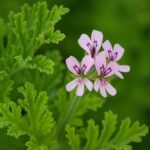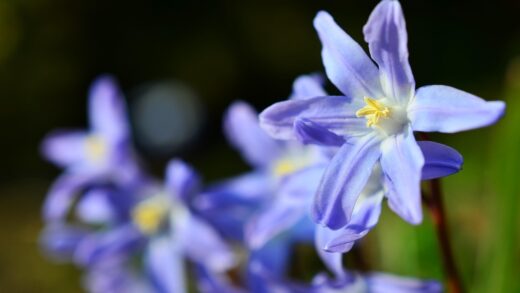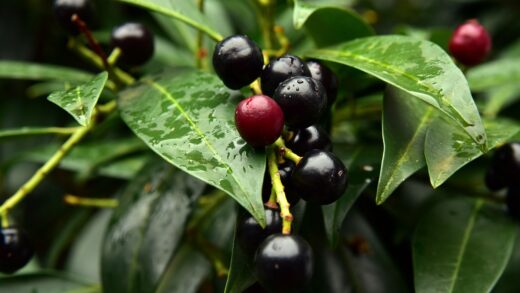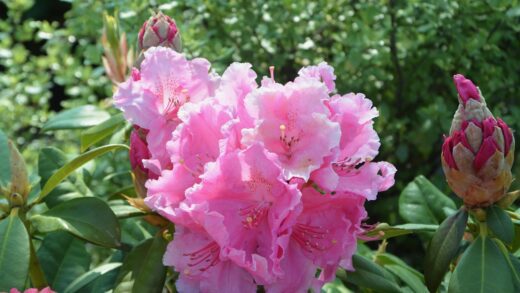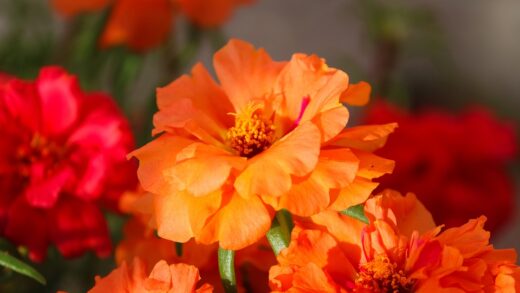The sleeping hibiscus, a truly captivating member of the Malvaceae family, presents a unique and rewarding challenge for the dedicated horticulturist. Its common name is derived from its peculiar, pendulous flowers that never fully open, creating an illusion of perpetual slumber. This characteristic, far from being a flaw, lends the plant an air of mystique and elegance, making it a prized specimen in any collection. Proper care of this plant requires a nuanced understanding of its specific needs, which differ subtly from its more common hibiscus relatives. Mastering its cultivation is a journey of observation and gentle intervention, ensuring the plant thrives and graces the garden with its distinctive crimson blooms.
This plant originates from subtropical and tropical regions, a fact that fundamentally shapes its cultivation requirements. It is accustomed to warmth, humidity, and a consistent supply of moisture, factors that must be replicated to the best of our ability in a temperate climate. The challenge lies in creating a microenvironment that mimics its native habitat, whether it is planted in a container or, in milder regions, directly in the garden. Understanding its natural lifecycle, including its periods of active growth and relative dormancy, is paramount to providing the right care at the right time. This knowledge forms the bedrock of a successful cultivation strategy, preventing common pitfalls and encouraging vigorous, healthy growth year after year.
One of the most appealing aspects of the sleeping hibiscus is its relatively forgiving nature, provided its core requirements are met. It is a robust plant that can tolerate occasional lapses in care, making it suitable for both experienced gardeners and enthusiastic beginners. However, to see it truly flourish and produce a profusion of its unique flowers, a more proactive approach is necessary. This involves not just watering and feeding, but also understanding the subtle cues the plant provides about its condition. Yellowing leaves, a lack of flowers, or leggy growth are all indicators that some aspect of its care regimen needs adjustment.
Ultimately, the successful cultivation of the sleeping hibiscus is a testament to a gardener’s skill and dedication. It requires a holistic approach, where soil, light, water, and nutrients are all considered in relation to one another. The reward for this diligence is a stunning plant that offers year-round interest, from its lush, deep green foliage to its ever-present, teardrop-shaped flowers. It is a plant that invites closer inspection and appreciation, a true conversation piece that will undoubtedly become a focal point of any garden or indoor plant collection. The journey of caring for this plant is as enriching as the visual reward it provides.
Ideal location and environmental conditions
Selecting the perfect location is the first critical step in ensuring the long-term health and vitality of your sleeping hibiscus. This plant thrives in bright, indirect light, a condition that closely mirrors the dappled sunlight it would receive under the canopy of larger trees in its native environment. Direct, scorching sun, particularly during the hottest part of the day, can lead to leaf scorch, causing the leaves to yellow and develop brown, crispy edges. An ideal spot might be near an east-facing window where it receives gentle morning sun, or in a location that is shaded during the harsh afternoon hours. For outdoor cultivation in suitable climates, planting it under the partial shade of a larger tree or on a covered patio provides the perfect balance of light and protection.
More articles on this topic
The ambient temperature and humidity levels are equally important factors to consider. The sleeping hibiscus is a tropical plant at heart and prefers warm conditions, ideally between 18 and 29 degrees Celsius. It is not frost-tolerant, and temperatures dropping below 10 degrees Celsius can cause significant stress and damage to the plant. Therefore, in regions with cold winters, it is essential to grow the plant in a container that can be moved indoors. Furthermore, it appreciates high humidity. To replicate this, you can place the pot on a tray of pebbles filled with water, group it with other plants, or use a room humidifier, especially during the dry winter months when indoor heating can drastically reduce air moisture.
Air circulation is another, often overlooked, aspect of its environmental needs. Good air movement helps to prevent the development of fungal diseases, such as powdery mildew, to which hibiscus plants can be susceptible in stagnant, overly humid conditions. However, it is important to protect the plant from strong, cold drafts, which can cause sudden leaf drop and stress. A location with gentle, consistent air movement is ideal. When grown indoors, avoid placing it directly in the path of heating or air conditioning vents, as the fluctuating temperatures and dry air can be detrimental to its health.
Finally, consider the plant’s mature size when choosing its long-term home. Malvaviscus arboreus var. penduliflorus can grow into a substantial shrub, reaching heights and spreads of several feet. If you are planting it in the ground, ensure it has ample space to grow without being crowded by other plants, which would force it to compete for light, water, and nutrients. For container-grown specimens, selecting a pot that allows for future growth is crucial. Starting with a pot that is only slightly larger than the root ball and repotting every couple of years will prevent the soil from becoming waterlogged while providing the roots with the space they need to expand.
Soil and potting medium requirements
The foundation of a healthy sleeping hibiscus is the soil it grows in, which must provide the right balance of moisture retention, drainage, and aeration. A high-quality, well-draining potting mix is essential for container-grown plants. An ideal blend would consist of a peat-based or coir-based medium, amended with perlite or vermiculite to improve drainage and prevent compaction. This ensures that while the soil holds enough moisture to keep the roots hydrated, excess water can easily escape, preventing the dreaded issue of root rot, a common ailment for many tropical plants when their roots are left in soggy conditions.
More articles on this topic
The pH of the soil is another critical factor that can significantly impact the plant’s ability to absorb nutrients. The sleeping hibiscus prefers a slightly acidic to neutral soil, with a pH range of approximately 6.0 to 7.0. Most commercial potting mixes fall within this range, but it can be beneficial to test your soil periodically, especially if you are using your own garden compost. If the soil is too alkaline, the plant may struggle to take up essential micronutrients like iron, leading to chlorosis, which manifests as yellowing leaves with green veins. Amending the soil with organic matter such as compost or pine bark fines can help to maintain a slightly acidic pH.
For plants that will be grown directly in the garden in suitable climates, soil preparation is key. Heavy clay soils should be amended to improve their structure and drainage. Incorporating generous amounts of organic matter, such as well-rotted manure, compost, or leaf mold, will work wonders. This not only improves the soil’s texture but also enriches it with a slow-release source of nutrients. On the other hand, very sandy soils, which drain too quickly, will benefit from the addition of organic matter to help them retain more moisture and nutrients for the plant’s roots to access.
Repotting is an integral part of long-term care for containerized sleeping hibiscus. This should typically be done every two to three years, or when you notice the plant has become root-bound, with roots circling the bottom of the pot or growing out of the drainage holes. The best time to repot is in the spring, just as the plant is entering its active growth phase. When repotting, choose a container that is only one size larger than the current one. This prevents the risk of overwatering, as a pot that is too large will hold an excessive amount of soil that can stay wet for too long before the roots have a chance to grow into it.
Watering and humidity management
Proper watering is perhaps the most crucial aspect of caring for the sleeping hibiscus, requiring a delicate balance between providing adequate moisture and avoiding waterlogged soil. The fundamental rule is to water thoroughly when the top inch or two of the soil feels dry to the touch. During the active growing season in spring and summer, the plant will be thirstier and may need watering every few days, depending on factors like temperature, light exposure, and pot size. When you do water, do so generously, allowing water to run through the drainage holes at the bottom of the pot. This ensures that the entire root ball is hydrated and also helps to flush out any accumulated salts from fertilizers.
In the autumn and winter, the plant’s growth naturally slows down, and its water requirements will decrease significantly. It is vital to adjust your watering frequency accordingly to prevent root rot. During this period of semi-dormancy, allow the soil to dry out more between waterings. The “finger test” remains your most reliable guide; do not water on a fixed schedule, but rather in response to the plant’s actual needs. Overwatering during the cooler months is one of the most common mistakes in caring for this plant, and it is far easier to remedy an underwatered plant than one suffering from root decay.
The quality of the water you use can also have an impact on the plant’s health. The sleeping hibiscus can be sensitive to the chlorine and other chemicals often found in tap water. If possible, using rainwater or distilled water is an excellent choice. Alternatively, you can allow tap water to sit out overnight before using it. This allows some of the chlorine to dissipate, making the water gentler on the plant’s root system. Consistent use of hard water can also lead to a buildup of mineral salts in the soil, which can interfere with nutrient uptake over time.
As a tropical native, the sleeping hibiscus thrives in a humid environment. In many homes, especially during winter when central heating is in use, the air can become exceedingly dry. To increase the humidity around your plant, you can employ several techniques. Regularly misting the leaves with a fine spray of water can provide a temporary boost. A more consistent solution is to place the plant on a pebble tray, which is a shallow tray filled with pebbles and water. As the water evaporates, it creates a pocket of humid air around the plant. Grouping it with other plants also helps to create a more humid microclimate through their collective transpiration.
Fertilization and nutritional needs
To support its lush foliage and continuous production of unique, pendulous flowers, the sleeping hibiscus has relatively high nutritional demands during its active growth period. Providing a balanced and consistent supply of nutrients is key to its overall vigor and blooming performance. A well-balanced, water-soluble fertilizer is an excellent choice for this plant. Look for a formulation with a balanced N-P-K (Nitrogen-Phosphorus-Potassium) ratio, such as 10-10-10 or 20-20-20. Alternatively, a fertilizer specifically designed for hibiscus or other tropical flowering plants can be used, as these often contain the necessary micronutrients, like iron and magnesium, that are crucial for healthy growth.
The frequency of fertilization is just as important as the type of fertilizer used. During the spring and summer months, when the plant is actively growing and flowering, it will benefit from regular feeding. A common recommendation is to fertilize every two to four weeks with a liquid fertilizer diluted to half the strength recommended on the packaging. This “weakly, weekly” (or bi-weekly) approach provides a steady stream of nutrients without the risk of fertilizer burn, which can damage the delicate root system. It is crucial to always water the plant thoroughly before applying any fertilizer to avoid concentrating the salts around dry roots.
As autumn approaches and the days grow shorter, the plant’s growth will naturally slow down. This is the time to reduce and eventually cease fertilization. Continuing to feed the plant during its dormant or semi-dormant period in winter is unnecessary and can be harmful. The plant is not actively taking up nutrients, and the excess fertilizer salts can accumulate in the soil, potentially leading to root damage. You can resume your regular feeding schedule in the spring, once you observe new growth emerging, signaling the end of its rest period.
Beyond synthetic fertilizers, incorporating organic matter into your care routine can provide significant benefits. Top-dressing the soil with a layer of compost or well-rotted manure once or twice a year can improve soil structure and provide a slow-release source of a wide range of nutrients. Organic amendments also encourage beneficial microbial activity in the soil, which helps to make nutrients more available to the plant. This holistic approach to nutrition, combining regular liquid feeding with organic soil enrichment, will create a robust and resilient plant capable of producing a spectacular display of its characteristic sleeping flowers.
Pruning and shaping the plant
Pruning is an essential maintenance practice that not only helps to control the size and shape of the sleeping hibiscus but also encourages bushier growth and more abundant flowering. This plant can become quite leggy and unruly if left to its own devices, so a regular trim is beneficial. The primary goal of pruning is to stimulate the development of new side shoots, as the plant produces flowers on new growth. Therefore, by strategically cutting back the branches, you are effectively promoting the very growth that will lead to a greater number of blooms.
The best time to perform any significant pruning is in the early spring, just before the plant begins its main growth spurt. This allows the plant to quickly recover and direct its energy into producing new, healthy shoots. You can prune back the entire plant by about one-third of its size to encourage a compact, bushy habit. When making your cuts, always use clean, sharp pruning shears or scissors to avoid crushing the stems and creating jagged wounds that can be an entry point for diseases. Make each cut just above a leaf node, as this is where the new growth will emerge.
Throughout the growing season, you can also perform light trimming or “pinching back” to maintain the plant’s desired shape and encourage continuous flowering. This involves simply pinching off the growing tips of the stems. This minor pruning redirects the plant’s energy from growing taller to producing more lateral branches. It is also an opportunity to remove any dead, damaged, or yellowing leaves and branches. Regularly removing this material not only improves the plant’s appearance but also enhances air circulation within the plant’s canopy, which can help to prevent fungal issues.
It is important to avoid heavy pruning in the late autumn or winter. Pruning stimulates new growth, and any tender new shoots that develop late in the season would be particularly vulnerable to cold damage. If you need to tidy up the plant before bringing it indoors for the winter, limit yourself to removing only what is absolutely necessary, such as damaged branches. By timing your pruning correctly and using the right techniques, you can transform your sleeping hibiscus into a beautifully shaped, dense shrub that is covered in its unique and fascinating crimson flowers throughout the blooming season.













